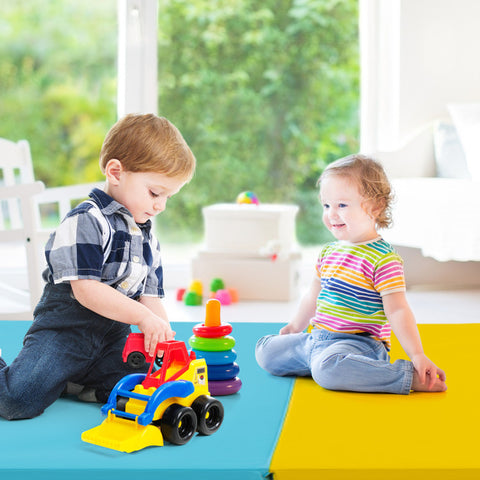News
Why High-Density Foam Matters in Gymnastics Mats and How It Affects Performance
Choosing the right gymnastics mat is crucial for both safety and performance. One of the most important factors to consider is the foam density. High-density foam plays a vital role in shock absorption, stability, and durability, ensuring that athletes can train effectively while minimizing the risk of injuries. Whether you're a gymnast, a martial artist, or a fitness enthusiast, understanding how foam density impacts your training can help you select the best mat for your needs.

What Is High-Density Foam in Gymnastics Mats?
High-density foam refers to foam material that is firm, resilient, and capable of absorbing impact without bottoming out. In gymnastics mats, martial arts mats, and fitness flooring, foam density is measured in pounds per cubic foot (PCF) or kilograms per cubic meter (kg/m³). The higher the density, the firmer and more durable the mat will be.
How High-Density Foam Affects Performance and Safety
1. Provides Superior Shock Absorption
Gymnasts and athletes perform jumps, flips, and landings that put pressure on their joints. A high-density gymnastics mat helps distribute impact forces evenly, reducing stress on the knees, ankles, and wrists. This is particularly important for tumbling, vaulting, and dismounts, where a hard landing can lead to injuries.
2. Enhances Stability for Better Movements
A mat with low-density foam may feel too soft, making it difficult to maintain balance and control during movements. High-density foam offers a stable and firm surface, allowing athletes to execute precision moves, whether it's a handstand, cartwheel, or martial arts kick.
3. Prevents Bottoming Out
Thin or low-density foam can compress too much under pressure, causing athletes to feel the hard surface beneath. This reduces protection and increases the risk of impact-related injuries. High-density foam maintains consistent support, preventing bottoming out even under intense training sessions.
4. Increases Durability and Longevity
Mats made with high-density polyurethane or polyethylene foam tend to last longer compared to those with lower-density materials. They withstand frequent use, repeated landings, and continuous pressure, making them a cost-effective investment for home and gym training.
Types of High-Density Foam Used in Gymnastics Mats
1. Cross-Linked Polyethylene Foam (XLPE)
- Provides firm support with excellent shock absorption
-Commonly used in tumbling mats, crash pads, and martial arts mats
-Ideal for high-impact activities due to its closed-cell structure
2. Polyurethane Foam (PU Foam)
-Softer and more flexible than XLPE foam
-Suitable for landing mats and crash pads to cushion heavy falls
-Absorbs energy well, making it ideal for high-impact landings
3. EVA Foam (Ethylene Vinyl Acetate)
- Lightweight yet durable
-Used in interlocking mats and padded flooring for home gyms
-Provides moderate cushioning with good traction for bodyweight exercises
Choosing the Right High-Density Foam Mat for Your Needs
Different training disciplines require different types of mats. Here’s how to choose the best one based on your activity:
- Gymnastics and Tumbling: Opt for cross-linked polyethylene foam mats with at least 1.5-inch thickness for adequate impact protection.
- Martial Arts and Wrestling: Use tatami mats or roll-out mats with high-density foam for firm grip and shock absorption.
- Yoga and Pilates: A soft but supportive PU foam mat can help reduce joint strain while maintaining stability.
- Strength Training and Calisthenics: EVA foam interlocking mats provide cushioning without excessive compression.
Tips for Maintaining High-Density Gymnastics Mats
-
Clean Regularly: Use a mild disinfectant to remove dirt, sweat, and bacteria.
-
Store Properly: Keep mats in a dry and well-ventilated area to prevent moisture buildup.
-
Avoid Sharp Objects: High-density foam is durable but can be punctured by sharp objects or heavy equipment.
-
Rotate Use: If you train frequently, rotating the sides of your mat can help maintain even wear and tear.
Conclusion
High-density foam plays a crucial role in enhancing performance, preventing injuries, and improving the longevity of gymnastics mats. Whether you're practicing tumbling, martial arts, or general fitness, choosing the right foam density ensures a safe and stable training experience. Investing in a durable and supportive gymnastics mat can make all the difference in training quality and injury prevention.

